Steemit Crypto Academy | Homework Task 6 For @stream4u | Types Of Crypto Assets Capital, Risk Capital In Penny Cryptocurrency, Importance Of Watchlist.
Hello steemians,
If you have already approached the world of crypto trading , or are planning to do so soon, you have already heard of small caps, mid caps and big caps . It is one of the most important classifications, among those concerning assets, therefore it represents an element to be fully aware of.
We talk about it in this article, As part of the sixth week of homework, suggested by the deeply respected teacher @stream4u, offering an overview of small caps, mid caps and big caps, presenting comprehensive definitions and talking about the repercussions for trading and investing.
Question1: Differences in Large Capital - Mid Capital - Small Capital and how they will affect to the Investment?
You will often hear companies/assets categorized by their market cap . This type of ranking, based on the value of companies/assest in fiat money, and so on, can also help an investor/traders select stocks/tokens that are in line with his investment objectives and risk appetite.
The categories into which companies/assets are most commonly divided according to their capitalization are:
- Large cap
- Mid cap
- Small cap
Although there are no official or legal definitions, the division between these categories is based on belonging to generally accepted capitalization bands; here we will use dollars as the reference currency.
- Large caps
The large caps have a market capitalization of more than $ 10 billion. These are very large companies/assets, usually those that have a long history and a household name.
They generally represent less risky investments, given that their resilience is based on years and years of stable earnings and performance on the stock market. However, as they are mature companies/assets they don't usually have very fast growth.
For investors, this means that large-cap stocks can offer stable, but not huge, returns. Most of the so-called blue chips belong to the large cap group .
- Mid cap
The mid-cap companies/assets have a market capitalization between 1 and 10 billion dollars . They are generally well-established and rather large companies/assets.
As their name suggests, mid caps occupy an intermediate range for investors: they may be riskier than large caps , but they are still relatively safe (certainly more so than small caps , from whose group they often emerge). Their prices may be subject to greater volatility than large caps , but they may also have greater potential for appreciation as many of these companies/assets are still actively growing.
- Small cap
The small caps are even more risky. But since they have a capitalization of below of $ 1 billion, they can offer greater opportunities for appreciation; in fact, these companies/assets are often preferred by growth-oriented investors . Investing in a successful small cap when its price is lower can earn you a lot of money, as long as you guess the right moment. But it can take time for the investment to pay off, and unlike large or mid caps , it probably won't generate many dividends or other returns in the meantime .
Question2: Your view, Which type of Asset capital can be more profitable? Why? Advantages and Disadvantages.
Personally I think that mid caps are the most profitable as it is a type of company / asset that is therefore found in all business sectors without exception and across the globe. They are therefore exposed to very varied and uncorrelated economic models, thus presenting a strong structural advantage.
THE ADVANTAGES OF MIDCAPS
- A relatively large size
Midcaps have reached critical size. They are big enough already and have sort of taken a step forward, proven that they have the kidneys strong enough to take on global markets. They are indeed companies / assets with solid balance sheets, capable of seizing strategic opportunities both in terms of external growth and new markets.
- A bulwark against volatility
Another major advantage of Midcaps: their very good resistance to volatility. Indeed, small caps but also mid caps are traditionally less exposed to volatility than large caps.
- Greater adaptability in the face of a changing economic environment
Midcaps are also a flexible asset class, able to adapt to market movements. The best indeed combine creativity, agility but also the ability to adapt. In a changing economic environment where regulations, commodity prices and currencies fluctuate, directly impacting industry and businesses, mid caps show a great capacity for adaptation.
- A diversification asset not to be overlooked
Finally, by virtue of their business segment and their development model, Mid caps allow major economic diversification compared to large caps. They also provide the opportunity to gain exposure to global growth with less political risk.
THE DISADVANTAGES OF MIDCAPS
Investing in mid caps has many advantages but also involves some risks. In order to avoid them as much as possible, it is first of all necessary to identify them properly.
- An increased risk of bankruptcy
Midcaps are more exposed than large caps to the risk of bankruptcy or the risk of a downturn in activity, which implies a risk of capital loss for the investor. It suffices for one (or a few) major customer (s) to do without the company's products and services for the order book to be very strongly impacted. However, they are less exposed to the risk of bankruptcy than small caps.
- Lower liquidity
An investor should also keep in mind that Mid Caps are not a very liquid investment. In any case, much less than large caps where you can buy and sell stocks relatively easily. With the Mid caps, you can't go in and out when you want. In other words, this is a true medium to long term investment. They are nevertheless more liquid than small caps.
Question3: Risk Capital In Penny Cryptocurrency.
Some Traders believe that you have to dig into the penny cryptocurrencies representing small caps to find the next Bitcoin or Etherum. But this strategy turns out to be in vain most of the time. Several factors make these securities riskier than those of famous tokens.
The public does not have enough information:
The key to an investment strategy is to acquire enough tangible information to make informed decisions. For small caps, information is much more difficult to find. In addition, much of the information available on small caps too often comes from unreliable sources.
- No minimum standards:
Markets with minimum standards therefore provide a sort of safety net, guarantee of quality and transparency.
- Lack of history
Many small caps are either young or on the verge of bankruptcy. These companies generally have little, if any, visible results. This lack of history makes it more difficult to determine the potential for price appreciation.
- Low liquidity
There are two problems with the fact that stocks are not very liquid.
First, you may not be able to sell the stock. If there is little liquidity, it can be difficult to find a match and you will have to lower the price until it becomes more attractive to potential buyers.
Second, this little liquidity allows some traders to manipulate stock prices. This manipulation can be done in a number of ways, the simplest being to buy enough stocks to inflate the prices and then sell them back immediately.
Question4: What is the Role of Watchlist? Best way to set Watchlist.
Watchlist allows you to bookmark the cryptocurrencies that interest you as well as their respective data. This feature is interesting because it will save you a lot of time especially when you have a lot of cryptocurrencies to watch out for.
On Coinmarketcap, you will be able to create a watchlist. To create it, proceed as follows:
- Log in then click "Watchlist" tab.
- Click on "Add coins"
- Choose the cryptocurrency that interests you.
- Refresh the page.
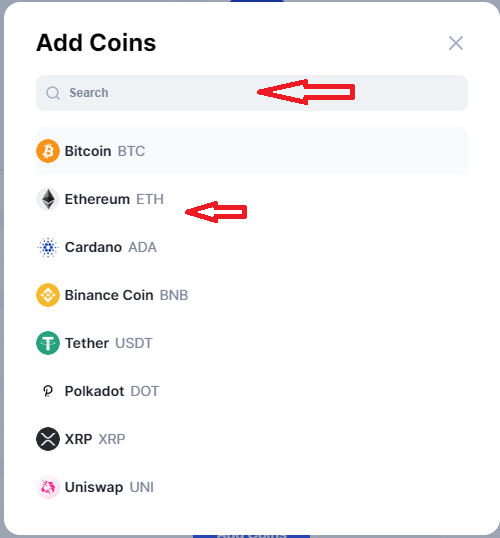
Conclusion:
We have simplified enough. It is not possible to do otherwise, given the complexity of the topic. Trading is not a question of big, mid, and small caps. There are so many other factors at play.
The advice, therefore, is to refer to an expert who can act as a mentor or, alternatively, guide the investments. A financial advisor experienced in trading, for example. The important thing is not to try to run independently, if you have not yet gained sufficient baggage to walk on your own feet.
Cc:-
@steemitblog
@steemcurator01
@steemcurator02
@stream4u


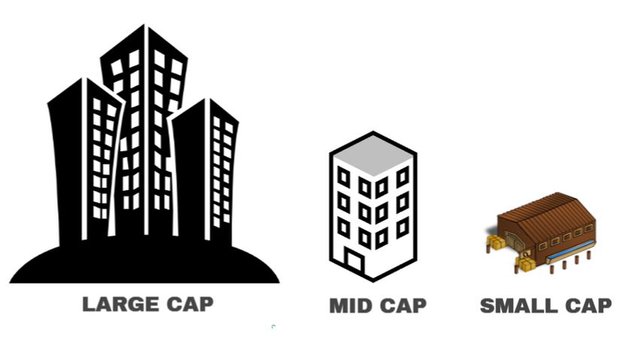
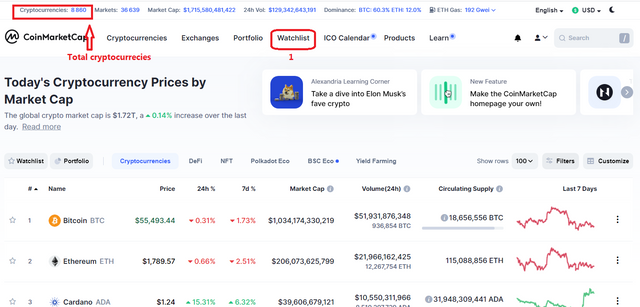
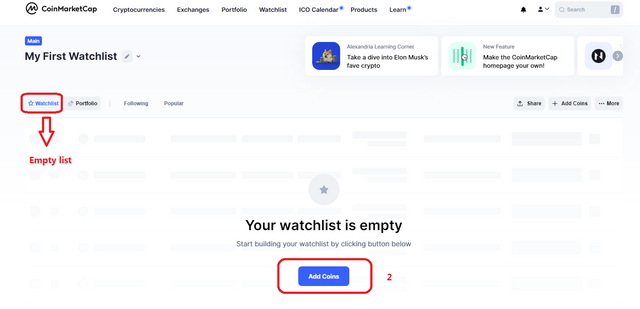
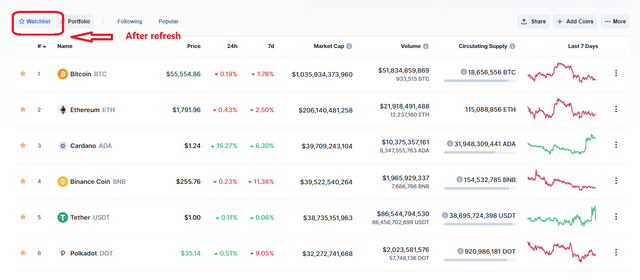
Hi @kouba01
Thank you for joining Steemit Crypto Academy and participated in the Homework Task 6.
Information about "Risk Capital In Penny Cryptocurrency." is good but In Risk capital, expecting something describe like. it Is money that does not affect your finances. Normally This is daily use money that you can use to buy Penny Cryptos and forget after that, which means you are using your money on Self Risk that is Risk Capital and not expecting a return in a short time.
Your Homework task 6 verification has been done by @Stream4u.
Thank You.
@stream4u
Crypto Professors : Steemit Crypto Academy
Thanks for your valuable addition!!
Twitter promotion